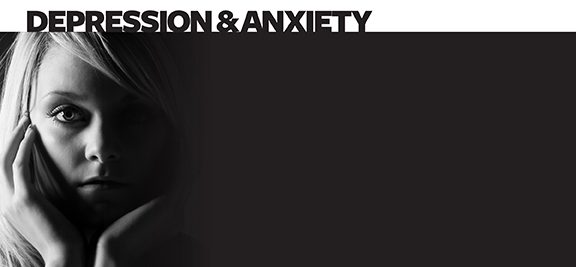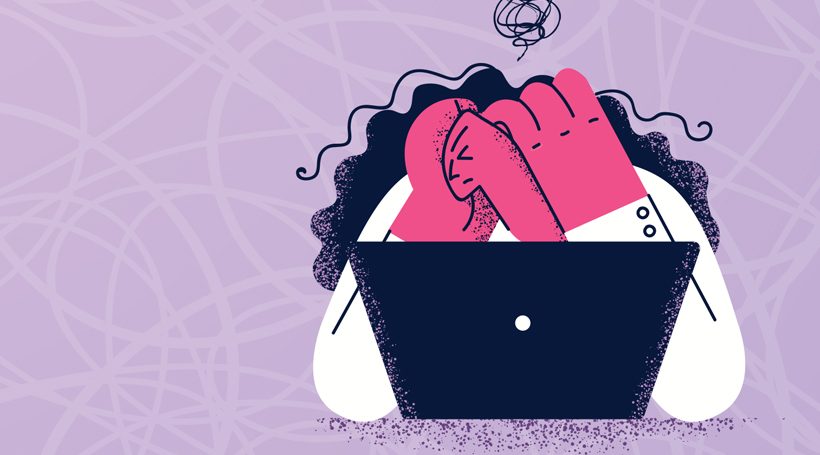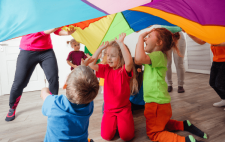As we start to come out of the pandemic, healthcare professionals are sounding an alarm. Kids aren’t ok. In fact, they’re not doing well at all. So parents, teachers, therapists, everyone: You need to look around. Check on the young people in your life. Because while you may think the last 2 years have been tough, you’re an adult. Kids and teens had an entirely different experience and fewer life lessons to know how to cope. So now their recovery begins. And it won’t be easy. Because they’re really not ok.
In the early days of the pandemic, mental health workers worried that an overwhelming number of South Jersey kids would need help coping with the many ways their lives changed seemingly overnight.
“Even before the pandemic, there was a noticeable rise in anxiety and depression among kids,” says Michelle Carlamere, director of Outpatient and Community Services at Oaks Integrated Care. “Then when Covid hit, it got very quiet – and that made us very nervous.”
Rightly so. The calm before the storm was short lived.
By late summer of 2020 – as it became clear that the pandemic would not be over in a matter of weeks or months – Oaks and other mental health providers saw the surge they had anticipated. Due to the shortage of mental health workers which had been worsening before the pandemic even began, many who needed help just couldn’t get it.
“This was the perfect storm,” says Tami Benton, MD, psychiatrist-in-chief of the Children’s Hospital of Philadelphia (CHOP). “Not every child who lived through the pandemic was in crisis, but a lot of young people were. We’re seeing higher rates of depression, anxiety and suicide attempts and young people struggling with eating disorders.”
“What really precipitated the crisis,” Benton adds, “is that so many more kids have needed help since the onset of the pandemic, but the number of providers didn’t increase. For kids seeking treatment, it wasn’t easily available. We’re actually seeing even more patients as more kids need help adjusting to the return to school and their normal environments.”
When we have someone come in reporting suicidal ideation, we make sure they’re immediately given the necessary supports and the right level of care. We also have a pathway within our system that alerts everyone that this person is struggling.
It wasn’t just a need for therapy. Hospital emergency rooms, typically the first point of care for children’s mental health breakdowns, continue reporting a steady stream of kids coming in for mental-health related issues. This includes a 50% increase in visits among teen girls since 2020 for behaviors ranging from eating disorders to anxiety, depression to attempted suicide, according to the CDC.
Substance abuse also remains an issue. The NJ Poison Control Center reports it assisted in the medical management of over 1,500 suicide attempts in preteens and teens in 2021, up from nearly 1,100 in 2019.
And while kids are still far less likely to suffer from Covid’s most severe physical symptoms, they haven’t been spared the pain of losing loved ones. More than 140,000 children lost a caregiver to Covid nationwide as of June 2021. The deaths hit hardest in communities of color. Black and brown children were up to 4.5 times more likely to lose a parent or grandparent to Covid than white children and teens, according to the CDC.
Covid-related grief is compounded by other ways kids’ routines have been disrupted by the pandemic – including the inability to socialize with friends or celebrate milestone events like proms and graduations, the impact of family financial stress, and mixed messages about masking and vaccines, says Joan Ordille, supervisor of the bereavement program at Samaritan’s Center for Grief Support. On top of that, Covid-related hospital restrictions prevented many from visiting loved ones to say goodbye and gathering in groups for funerals or other services to mourn.
“Children who are dealing with multiple traumas are more at risk of severe complications of grief,” says Ordille. “Not being in school impacted kids’ ability to access services. Those losses add up.”
Even now, as many kids have adjusted to in-person school and the return of social activities, the effects of more than 2 years of pandemic living are still with us, and continue to evolve. Last month, when New Jersey rescinded mask mandates, it wasn’t viewed as a positive return to normalcy by everyone. Many school children were counted among those who felt anxious over the sudden change, says Oaks’ Carlamere.
“When schools went in-person, kids were still having difficulty with focus and concentration. They were fearful that schools would go remote again. And now, after they were required to wear masks for so long, kids are getting mixed messages,” she says. “That creates more fear.”
For those looking for pandemic silver linings, there are some. For years, health professionals have been sounding the alarm about the mental health needs of children. And for years, those concerns were brushed aside.
When schools went in-person, kids were still having difficulty with focus and concentration. They were fearful that schools would go remote again. And now, after they were required to wear masks for so long, kids are getting mixed messages. That creates more fear.
“Before the pandemic the rates of depression and anxiety were already going up, and we’d call attention to it, but not much happened,” says Benton, the president elect of the American Academy of Childhood and Adolescent Psychiatry. “Because it was right in front of us, the pandemic has forced all of us to pay attention to our young people.”
And that seems to be happening. Last year, 3 major children’s health organizations – the American Academy of Pediatrics, the American Academy of Child and Adolescent Psychiatry and the Children’s Hospital Association – proclaimed that the pandemic-related decline in child and adolescent mental health has become a national emergency.
Declaring that children’s “lives and education have been turned upside-down,” President Joe Biden last month pledged to push for $1 billion in new federal funding to help schools hire mental health and student support professionals, building on programs launched using Covid recovery aid.
Also, in the last 2 years, Gov. Phil Murphy has pumped more than $100 million in new funding into the state’s Children’s System of Care, directly impacting community-based programs serving children and adolescents with emotional and behavioral healthcare challenges, developmental and intellectual disabilities and substance abuse issues.
While hopeful that increased funding will help overwhelmed nonprofits and private practices reach more kids, Benton says the shortage of healthcare workers is not a quick fix. Still, she adds, many of the initiatives healthcare systems created at the height of the pandemic have proven track records.
“We offered free online parent and teacher education classes about managing stress, including ways to model conversations with kids about being anxious during Covid,” she says. “What is amazing to me is how inexpensive and effective those strategies are.”
More so than in the past, Benton says, doctors will take time during pediatric visits to encourage families to talk about their emotional experiences or ask if they have questions about depression or anxiety. Often that starts conversations that could lead to game-changing but simple solutions, such as changes in sleep schedule or diet, or a recommendation for a therapist.
“These are small things that could prevent people from getting to the point of distress,” Benton adds.
Carlamere says that during the pandemic Oaks adopted a new Zero Suicide policy. All staff were trained to assess whether a patient may be struggling with thoughts of suicide and what to do if they are. Contrary to beliefs, talking directly about suicide, she says, is a proven means of prevention.
“When we have someone come in reporting suicidal ideation, we make sure they’re immediately given the necessary supports and the right level of care,” Carlamere says. “We also have a pathway within our system that alerts everyone that this person is struggling. When they’re on that pathway, all eyes are on them and we make sure they’re safe. It’s been extremely helpful.”
An influx of funds has also led to more collaboration with school districts, including providing suicide prevention services, she adds. Oaks is also partnering with the Camden-based Center for Family Services to provide both their employees and the community with free workshops centered on coping skills and resiliency.
Healthcare providers are banking on the ability of the vast majority of kids to adapt to whatever changes the new stage of pandemic brings our way. As Benton points out, the services are out there, and the world is now taking the mental health needs of kids seriously.
“There were costs to not paying attention to the mental health needs of our young people before the pandemic,” says Benton. “But that’s what’s different. We’re paying attention now.”

Depression is a mood disorder that can be described as feeling sad, unhappy or having a loss of interest in daily activities.
Signs:
Constant feelings of sadness and crying
Difficulty concentrating
Loss of interest or pleasure in things you used to enjoy
Avoidance of daily activities
Feelings of guilt, shame or hopelessness
Trouble falling asleep or sleeping too much
Change in appetite (overeating or not having an appetite)
Lack of energy
Thoughts of harming yourself or others
Anxiety is an emotion everyone faces at different times. It can be a more serious concern when a feeling of worry, nervousness or unease about a specific event, person or outcome affects the ability to function in day-to-day life.
Signs:
Frequent worry
Feelings of fear or uneasiness
Racing thoughts that cannot be stopped
Heart pounding or “fluttering”
Feeling like you can’t catch your breath
Source: Children’s Hospital of Philadelphia














